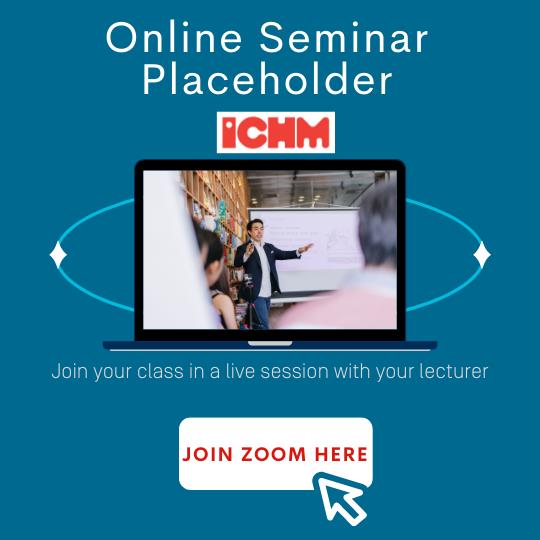Have you ever gone into a store looking for a new shirt, but walked out with way more items than you needed because the sales assistant was so friendly and helpful in their recommendations? Perhaps you have been to a restaurant where the food was perfectly fine, but your experience was hampered by abrupt wait staff, or you were seated at a table next to a loud kitchen? These are just a few examples of how service attributes influence us as consumers. Have you caught a ride in an Uber, taken a flight interstate or overseas (sorry, too soon for this example – thanks COVID!), stayed in a hotel or Airbnb, had a haircut, gone to a music festival? Then you have participated in the service economy. Even by taking this Services Marketing subject right now, you are consuming a learning service.
Welcome to Topic 1: The Extended Marketing Mix in the Service Economy. In this topic, you will learn about:
- How services contribute to a country’s economy
- How services are defined
- How services create value for consumers
- The key characteristics that distinguish services from manufactured goods
- The forces that are transforming services markets
- The ways of categorising services
- The key components of service operations, delivery and marketing systems
- The expanded marketing mix for services.
The service sector is incredibly important to the Australian economy, and indeed to economies globally. In this topic, we will learn about the role that services play in the economy, and why it is important to define and differentiate services as distinct from products/goods. If you have taken an introductory marketing subject, you will have probably learnt the key attributes of service – intangibility, variability, perishability, and inseparability. However, there is so much more to understand about the role that service plays in marketing, the unique challenges it presents to the extended marketing mix, and the myriad of ways marketers can design and utilise components of service to their advantage… which is why we are here! This first topic sets the scene of ‘why services marketing?’ and gives us a roadmap for the topics we will cover during this semester.
These relate to the Subject Learning Outcomes:
- Discuss the key concepts, principles and unique challenges of services marketing in relation to the extended marketing mix.
Welcome to your pre-seminar learning tasks for this week. Please ensure you complete these prior to attending your scheduled seminar with your lecturer.
Click on each of the following headings to read more about what is required for each of your pre-seminar learning tasks.
Read Chapter 1 of the prescribed text - Lovelock et al. 2014, Marketing in the service economy, 6th edn., Pearson Australia.
Watch the following videos:
- What is service marketing & why is it so important to the economy?
- Characteristics of services
- Understanding the economic shock of the COVID-19 crisis
After watching the videos, answer the questions within Topic 1: Forum activity 1. You can also navigate to the forum by clicking on 'MKT102 Subject Forum' in the navigation bar for this subject.
Read the following article:
Levitt, T 1981, 'Marketing intangible products and product intangibles', Harvard Business Review, https://hbr.org/1981/05/marketing-intangible-products-and-product-intangibles
Read the two (2) case studies:
- 'CBA’s new ‘CAN’ campaign' on pp. 3-4 of the prescribed text.
- 'Rentafriend.com' on p. 29 of the prescribed text.
Read and watch the following content.

The role of services
A massive shift can be seen towards service industries globally. Whether it’s getting a haircut, seeking legal advice, taking a university course, eating in a restaurant, visiting a doctor, or going on a holiday, service industries are dominant players in our economy and dominate various facets of our lives.
According to the Australian Bureau of Statistics ([ABS] 2019) figures, in 2017-2018 services accounted for 80% of Australian production (up from 72.8% in 1994-1995).
According to the Department of Foreign Affairs and Trade [DFAT]:
The services sector makes up a large part of the Australian economy, representing over 70 per cent of Australia's gross domestic product (GDP) and employing four out of every five Australians.DFAT (n.d.)
In 2016, Australia's five-largest services exports were:
- Education-related travel services – $22.0 billion
- Recreational travel services – $17.4 billion
- Professional services – $4.8 billion
- Business travel services – $4.2 billion
- Financial services – $3.5 billion.
Services defined
Services are varied and diverse, making them hard to define. Distinctions, definitions, characteristics have been the subject of argument between scholars and industry for decades – even the authors of the prescribed text could not confine services to a single definition. Instead of adding yet another definition to the mix, let’s focus on the two (2) presented in the text (Lovelock et al. 2014, p. 7):
- A service is any act, performance or experience that one party can offer to another and that is essentially intangible and does not result in the ownership of anything, but nonetheless creates value for the recipient. Its production may or may not be tied to a physical product.
- Services are processes (economic activities) that provide time, place, form, problem solving or experiential value to the receiver.
What is the key commonality in these definitions? Services are something that create or provide value.
Therefore, it is our role as marketers to firstly identify the value that our consumers seek – we do this by having a comprehensive understanding of who our consumers are and what they want. Secondly, we create an offering that we believe will meet (and surpass) their expectations, providing the value that consumers are wanting. Finally, we must communicate that value to our consumers – we must tell them that we can provide value for them, through strategic selection of communication channels that reach those customers, delivering messages that will resonate with them.
The overarching purpose of this services marketing subject is to understand this process of identifying, creating, and communicating value, and forms the roadmap for all the topics we will cover in this subject (Lovelock et al. 2014, p. 8).
The following figure illustrates the framework for developing and delivering customer value.
Services: intangible elements dominate value creation
Another common element within the definition of service is the concept of intangibility – services do not require the physical transfer of ownership of a good or product. Service practitioners and scholars love using the saying that ‘you can’t drop a service on your foot’. That being said, services can (and very often do) have both tangible and intangible elements. The following figure, adapted from Shostack (1977), demonstrates how goods and services can vary in the dominance and importance of intangible versus tangible components.
- Salt
- Soft drink
- Detergent
- House
- Car
- Tailored suit
- Fast-food restaurant (evenly balanced between goods and services)
- Hotel
- Air travel
- Advertising agency
- Theatre
- Teaching
- Professional services
There are also interesting examples of manufacturers that historically dealt with ‘tangible dominant’ offerings, that have now integrated intangible elements as an opportunity to create value for customers. The automotive sector is a great example of this. The core product is, of course, the vehicle. However, over time car companies have expanded on the intangible elements to create value (from showroom experience, to warranties, services, memberships etc). As a rather extreme example, the Lexus flagship store in Tokyo called INTERSECT, really leans into the experiential and intangible elements of what it means to ‘be a Lexus owner’. In fact, you cannot even purchase a car at this store! Watch the following video to see what this looks like.
As the lines between tangible goods and intangible services continue to merge and blur, it becomes more difficult to distinguish whether an organisation is offering a ‘service’ or a ‘good with intangible (service) elements’. A helpful way to think about this is in terms of core service elements versus supplementary service elements (Lovelock et al. 2014, p. 11):
Core service elements – the core offering or value is the service (service firms)Lovelock et al., p. 11
Supplementary service elements – activities or amenities that facilitate and enhance use of the core offering. Product firms/ manufacturer can create value by utilising these supplementary service elements, but ultimately their key goal is to sell a physical item and transfer ownership.Lovelock et al., p. 11
While we focus on both service products (where the service itself is the core product) and supplementary service elements (customer service), the key focus of the service economy (and of this services marketing subject) is on the unique characteristics of the former.
Powerful forces are transforming the service economy
The prescribed text details several important forces at play within the service economy, including:
- The ‘hollowing out’ effect – a shift in employment patterns in an economy from manufacturing to services. High wage countries like Australia now outsource service tasks, not just manufacturing, to other major service economies where labour is cheaper – for example telemarketing/call centre outsourcing.
- Deregulation and privatisation – health, telecommunications, transport are more commonly being managed by private corporations.
- Social changes – more affluent, dual income families, time poor, the experience economy.
- The growth of franchising – creates consistency (to a degree) – standardised quality, level of service, experience (Lovelock et al. 2014).
But it would be remiss to not mention the biggest force impacting the service economy in recent history – COVID-19. The pandemic has had devastating impacts on so many key service sectors – hospitality, tourism, and the arts to name a few. Two (2) of the assigned videos for this topic delve into the economic impacts of COVID-19 in greater detail. However, from this devastation, there has also been an extraordinary push to innovate and recreate elements of the service experience in a COVID-friendly manner.

Another example of innovation during COVID-19 is Providoor, an online marketplace delivering the best of Melbourne and Sydney's restaurants into customers' homes to recreate high-quality restaurant experiences (Providoor 2021). This platform has seen great success during the lockdowns in both states and has allowed top tier restaurants to still run in some capacity during this time (many of the restaurants on these platforms had previously not offered takeaway options).
Differences between goods and services
There are eight (8) common differences between services and goods (Lovelock et al. 2014, p. 14) and these are explored in the following video:
An expanded marketing mix for services
If you have taken a marketing subject before you will know of ‘the four Ps’ – Product, Price, Place (distribution), and Promotion. Each of these elements are at the disposal of marketers to create value for their customers. However, there is an expanded marketing mix with three additional Ps, specifically addressing the unique considerations for services. They are People, Physical evidence, and Process.
People

People refers to the impact of service employees on customers, as well the impact of customers interacting with each other. The interaction with a service employee has a huge impact on the overall service experience (we are all quick to remember a rude staff member at a restaurant, or a hairdresser who gave us the wrong haircut). Employee selection, training, and management is therefore an important element in delivering service value. An additional element of ‘people’ includes the presence of other customers – a loud or disruptive table can ruin the ambiance of a quiet restaurant, or the overcrowding of a store can cause service delays and impatience.
Physical evidence
Physical evidence (tangible cues) refers to efforts to ‘tangibilise’ the intangible. As services are often hard to visualise or assess before they are consumed, marketers put considerable effort into providing tangible cues that send a message to consumers about the service quality they can expect. Servicescape (the physical surroundings of a service) for example has been found to have a considerable impact on consumer perceptions, evaluations and behaviours (ever started chewing food quicker in a restaurant because they were playing fast tempo music? That was probably intentional! More on that later in the subject).
Process

Process refers to the behind-the-scenes elements that support service delivery (booking systems and quality control procedures). When they work well, they often go unnoticed by consumers, but when they do not… ever arrived at an airport, hotel, restaurant etc. and there’s no record of your booking? Poor processes can lead to disappointment, disruptions, and even losing customers all together.
Knowledge check
Complete the following five (5) tasks. Click the arrows to navigate between the tasks.
Key takeouts
Congratulations, we made it to the end of the first topic! Some key takeouts from Topic 1:
- Services are a practically inescapable part of our lives, and the service sector plays a focal role in both the Australian economy and economies across the globe.
- Despite the various definitions, a key element of services are that they create or provide value, that is usually derived from intangible elements (you can’t drop a service on your foot!).
- It is important to consider the external forces at play that impact the service economy, with COVID-19 being the most notable force in recent years (presenting considerable barriers and necessitating innovation).
- There are various important differences between goods and services that we must understand in order to effectively identify, create and communicate value to service customers. As a result we extend the original ‘4Ps of marketing’ to include people, physical evidence, and process.
Welcome to your seminar for this topic. Your lecturer will start a video stream during your scheduled class time. You can access your scheduled class by clicking on ‘Live Sessions’ found within your navigation bar and locating the relevant day/class or by clicking on the following link and then clicking 'Join' to enter the class.
Click here to access your seminar.
The following learning tasks will be completed during the seminar with your lecturer. Should you be unable to attend, you will be able to watch the recording, which can be found via the following link or by navigating to the class through ‘Live Sessions’ via your navigation bar.
Click here to access the recording. (Please note: this will be available shortly after the live session has ended.)

In-seminar learning tasks
The in-seminar learning tasks identified below will be completed during the scheduled seminar. Your lecturer will guide you through these tasks. Click on each of the following headings to read more about the requirements for each of your in-seminar learning tasks.
In a breakout room assigned by your lecturer, you will be given one (1) of the following questions to discuss. At the end of the discussion, you will share your responses with the class:
- Why does services marketing require a special approach, sets of concepts and body of knowledge? Why not just ‘marketing’?
- Identify three (3) forces transforming the service landscape, and the impact they have on the service economy
In a breakout room assigned by your lecturer, you will be given one (1) of the following case studies to discuss. At the end of the discussion, you will share your responses with the class:
- CBA’s new ‘CAN’ campaign (Lovelock et al. 2014, pp. 3-4)
- Do you think this was an effective campaign for its time? Why/not?
- Given some of the external forces facing CBA in recent years (e.g. the Banking Royal Commission, COVID), does the ‘CAN’ campaign still work today? What change have (or should) be adopted in light of these forces?
- Rentafriend.com (Lovelock et al. 2014, p. 29)
- What is the ‘core product/service’ of this website? Who is its target market?
- How could you manage the process to meet renters’ expectations?
In a breakout room assigned by your lecturer, you will be given one (1) of the following questions to discuss. At the end of the discussion, you will share your responses with the class:
- Choose a service organisation with which you are familiar. Then, show how each of the seven (7) elements of the services marketing mix might be used by management to attract customers and create value.
- Think of some examples of self-service technologies (SSTs) that you have used before. How has this changed the way you interact with these service organisations?
Welcome to your post-seminar learning tasks for this week. Please ensure you complete these after attending your scheduled seminar with your lecturer. Your lecturer will advise you if any of these are to be completed during your consultation session.
In your reflective journal, prepare a list of key terms and concepts from this topic that will be useful for your audit report. Find supporting references relevant to your chosen company in relation to these concepts.
We will discuss the purpose of this activity in more detail in the scheduled seminar.
You can access the reflective journal by clicking on ‘Journal’ in the navigation bar for this subject.
Please read through the case study, Banyan Tree: Branding the intangible (Lovelock et al. 2014, pp. 444-449), a few times to familiarise yourself with the company and concepts covered. Take notes on key points as you go; they will help you with Assignment 1.
Decide on your services company of focus for your presentation and audit – conduct an initial information search on the company.
Each week you will have a consultation session, which will be facilitated by your lecturer. You can join in and work with your peers on activities relating to this subject. These session times and activities will be communicated to you by your lecturer each week. Your lecturer will start a video stream during your scheduled class time. You can access your scheduled class by clicking on ‘Live Sessions’ found within your navigation bar and locating the relevant day/class or by clicking on the following link and then clicking 'Join' to enter the class.
Click here to access your consultation session.
Should you be unable to attend, you will be able to watch the recording, which can be found via the following link or by navigating to the class through ‘Live Sessions’ via your navigation bar.
Click here to access the recording. (Please note: this will be available shortly after the live session has ended.)

For those who want to go the extra mile, here are some additional useful resources:
- Australian Bureau of Statistics 2019, Services in the Australian economy, Australian Government.
- Ostrom, AL, Parasuraman, A, Bowen, DE, Patrício, L & Voss, CA 2015, ‘Service research priorities in a rapidly changing context’, Journal of Service Research, 18(2):127-159.
- Vargo, SL & Lusch, RF 2004, ‘Evolving to a new dominant logic for marketing’, Journal of Marketing, 68(1):1-17.
- Vargo, SL & Lusch, RF 2008, ‘Service-dominant logic: continuing the evolution’. Journal of the Academy of Marketing Science, 36(1):1-10.
References
- Australian Bureau of Statistics 2019, Services in the Australian economy, Australian Government, https://www.abs.gov.au/articles/services-australian-economy
- Department of Foreign Affairs and Trade n.d., The importance of services trade to Australia, Australian Government, https://www.dfat.gov.au/trade/services-and-digital-trade/Pages/the-importance-of-services-trade-to-australia
- Discover Lexus 2013, INTERSECT BY LEXUS - TOKYO image movie, streaming video, YouTube, https://www.youtube.com/watch?v=QZHfJvHJKJM
- Lovelock, C, Patterson, P & Wirtz, J 2014, Services marketing, 6th edn., Pearson Australia.
- Providoor 2021, Frequently asked questions, https://www.providoor.com.au/promo/faq
- Shostack, GL 1977, ‘Breaking free from product marketing’, Journal of Marketing, 41(2):73-80.
- Takayama, K 2013, Intersect by Lexus, Kozo Takayama, https://www.kozotakayama.jp/search/intersect
Copyright
WARNING
This material has been reproduced and communicated to you by or on behalf of UP Education in accordance with section 113P of the Copyright Act 1968 (the Act).
The material in this communication may be subject to copyright under the Act. Any further reproduction or communication of this material by you may be the subject of copyright protection under the Act. Do not remove this notice.
